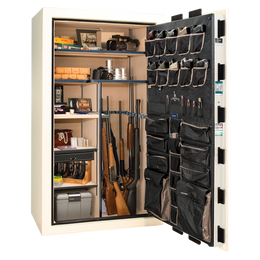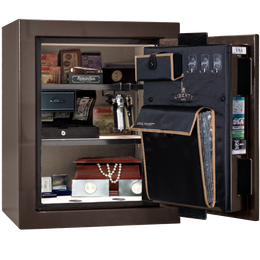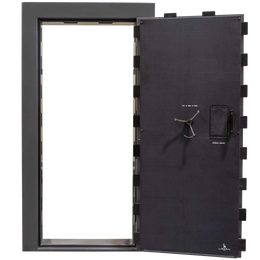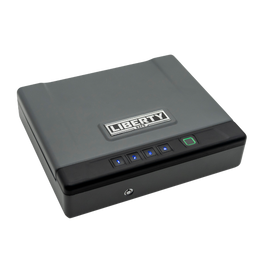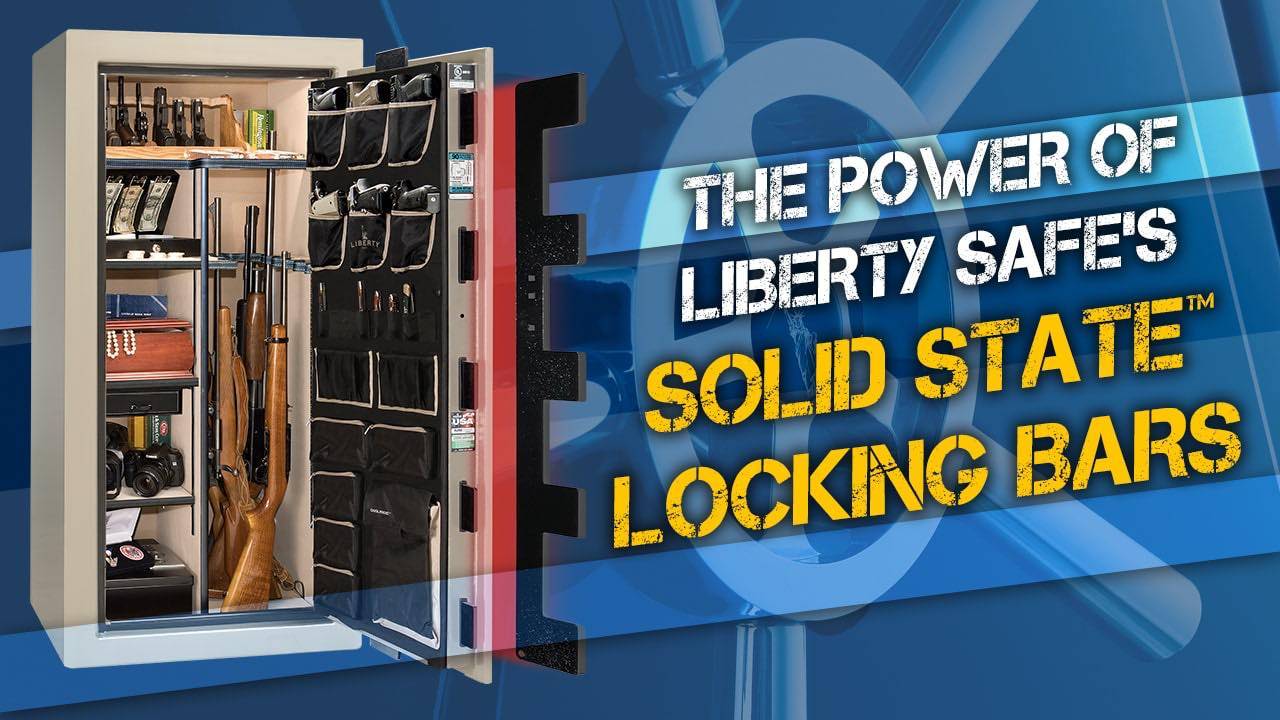HOW DO GUN SAFES STAY CLOSED?
Whether it’s a curious child, a less-than-responsible teenager, or a malicious thief, you don’t want anyone touching your firearms without your permission. But how do gun safes and cabinets stay shut? In this video, we’re going to take a look at the mechanisms that make a safe “safe,” their burglar resistance, as well as determine if some locking mechanisms are better than others.
Gun Cabinet Latches
Gun cabinets come in a few different styles, shapes, and sizes. Some are made of wood and some are made of steel. But nearly all of them lock using a similar mechanism: a basic, key-operated latch. Much like the lock you might find on a file cabinet or a desk drawer, the gun cabinet latch is all self-contained. It consists of the lock, and tumblers, and a small metal bar that is either engaged or withdrawn by turning the key. The lock itself is simple—just a small bar between your firearms and unauthorized access. It will keep most minors out, but more determined individuals can get in pretty easily with some common tools.
Locking Bolts (a.k.a. Long Pins)
Having been the industry standard for well over a hundred years, locking bolts (also known as long pins) are used on everything from tiny hotel safes to massive commercial safes. These security measures are constructed by attaching the round pins to a steel angle bar, then attaching that angle bar to the locking mechanism. Operating the lock on the outside of the safe engages the locking mechanism, which moves the angle bar, which then moves the pins in and out of place.
Locking bolts offer a high level of security, with one drawback. The attachment that holds the pins to the angle bar presents a potential weak point. During pry attacks, this point takes most of the pressure, and often, it bends or breaks, allowing the door to just be simply opened.
Military-Style Locking Bars
In an effort to overcome the security problems of latches and bolts, and of weak connection points in particular, some engineers have gone back to the drawing board. The result: military-style locking bars. These bad boys are built from a solid piece of steel, lack the connection points that can sometimes be pried open by thieves that locking bolts have, and offer more surface area of contact with the door frame. With these powers combined you’ve got a security system that’s stronger than the rest that’s virtually impossible to get past.
Download our PDF on Gun Safe Locking Mechanisms here.
VIEW OUR SPECIALS Which Safe is Right For You? TAKE THE QUIZ


